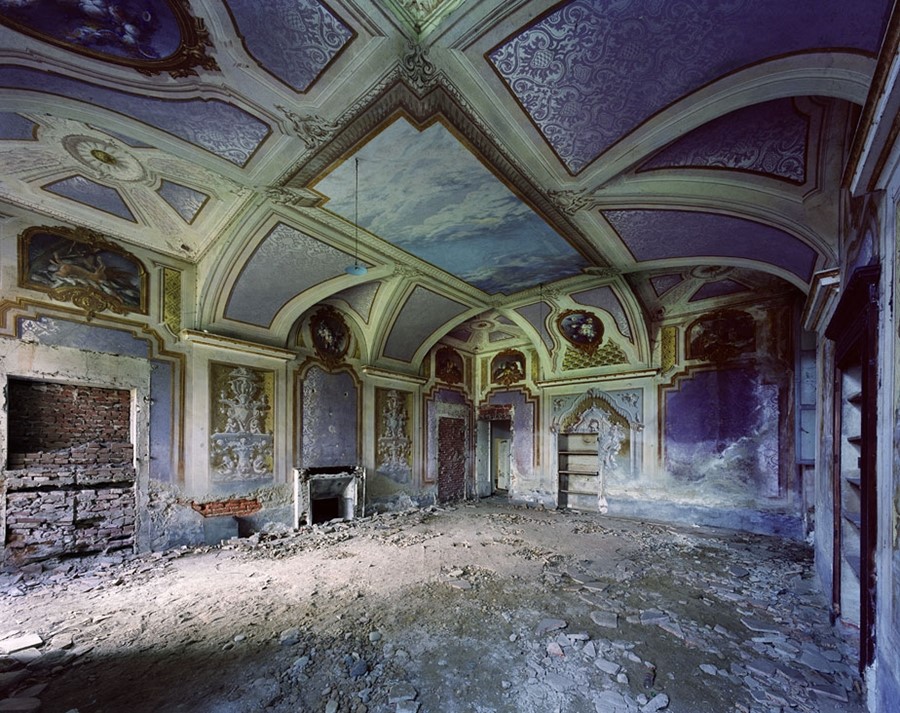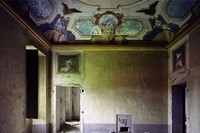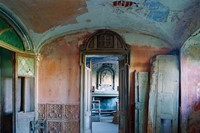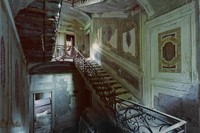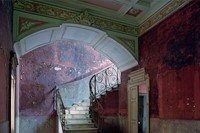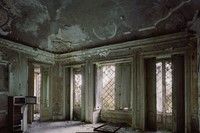For photographer Thomas Jorion, the exploration of abandoned buildings has been a habit since childhood, one that very organically became an art project when he acquired his first camera.
With the sparkling novelty of the Olympic Park rejuvenating East London, and the Shard altering and heightening the city skyline, it is an interesting time to consider structures which have been simply left to be repossessed by nature and their surroundings. This is a preoccupation for photographer Thomas Jorion, who has been exploring abandoned buildings since childhood; a habit which organically became an art project when he acquired his first camera. His series of photo collections, under the umbrella title of Timeless Islands, have eclectic subject matter – from overgrown amusement parks and Soviet military bases in Germany, to gas stations, crumbling hotel rooms and abandoned industrial plants across Europe, Japan and the US.
The images in this series, Forgotten Palaces, were mostly taken in northern Italy where a combination of factors, from financial ruin and the threat of landslides, to, in one case, the construction of a nuclear base nearby, led to the owners of these extraordinary villas abandoning their homes, leaving them to fall into decline. These exquisitely poignant portraits of architectural collapse are thus works of history told without human figures, rather through the juxtaposition of grandeur and decay. Mystery is redolent in all of the images, as the reasons for abandonment remain oblique, but for Jorion, the backstory of the locations is not important; his emphasis is instead the thrill of discovery and the captivating beauty of the locations.
"These exquisitely poignant portraits of architectural collapse are works of history told without human figures, rather through the juxtaposition of grandeur and decay."
Here, he speaks to AnOther about how his fascination began and the incomparable joy of pressing the shutter button.
What inspired you to start taking photos of crumbling palaces and stately homes?
I don’t know exactly why I love photographing these abandoned places. Perhaps it goes back to the time when I was a child, and I visited abandoned houses with my friends in my neighborhood. When I bought my first camera in 1996, I naturally started photographing abandoned manors around my home, and since then, I've never stopped shooting this subject.
Where do you find out about them? Do you research or come upon them by accident while travelling?
I find these locations in two ways. Before I choose my location, I make preliminary research from home and using contacts. This gives me the basic framework of my trip. Once there I take the opportunity to try new places.
Which is your favourite and why?
I have to admit that it changes all the time – it’s so much better that way. When I like a picture, I look at it a lot and then after a few months I get bored and I want to make new ones. As I work with a large format camera and color negative I always want to repeat the unique pleasure of pressing the shutter button.
Your images seem to capture the first moment of entering a space that has been undisturbed for years - is this generally the case or do the shots require a lot of preparation?
Mostly very few people have been there before me. Now it is increasingly hard to keep some locations secret to avoid damage. But wherever I am, I never stage a picture or make preparations in the space, and I never use additional light.
What fascinates you about these spaces?
I'm more fascinated by the beauty of the place than its history. When I have information I'm interested, but what transports me the most is visiting and discovering the place. The joy of imagining the photographs I’ll realize with light present in the place.
Your images are of structures created, and then often abandoned by humans - but they never feature a human figure. Are you at all interested in taking pictures of people or is it just their influence on architectural environments that interests you?
Indeed I have already asked myself if I should introduce people into these places and my pictures. But I rejected this idea because it‘s the place, the architecture that interests me. To put a living subject in the scene does not tell the same story.
See more of Thomas Jorion's work here.
Text by Tish Wrigley
